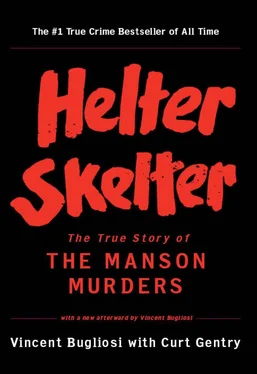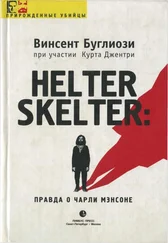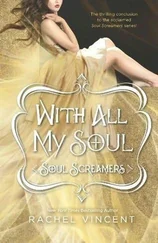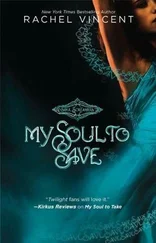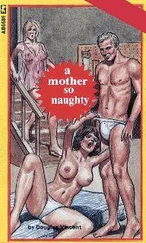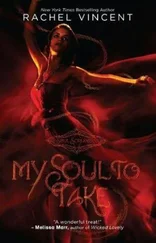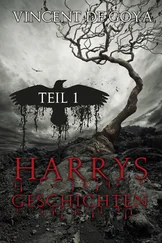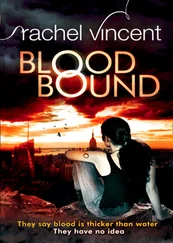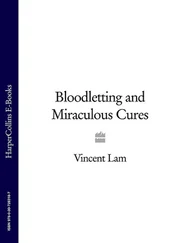That same day our office learned that Charles “Tex” Watson had been returned to Los Angeles and ruled competent to stand trial.
Only three days after his transfer to Atascadero, Watson had begun eating regular meals. Within a month, one of the psychiatrists who examined him wrote: “There is no evidence of abnormal behavior at the present time except his silence, which is purposeful and with reason.” Another later noted: “Psychological testing gave a scatter pattern of responses inconsistent with any recognized form of mental illness…” In short, Tex was faking it. All this information would be useful, I knew, if Tex tried to plead insanity during his trial, which was now scheduled to follow the current proceedings.
Catherine Share, aka Gypsy, was the defense’s most effective liar. She was also, at twenty-eight, the oldest female member of the Family. And, of all its members, she had the most unusual background.
She was born in Paris in 1942, her father a Hungarian violinist, her mother a German-Jewish refugee. Both parents, members of the French underground, committed suicide during the war. At eight, she was adopted and brought to the United States by an American family. Her adoptive mother, who was suffering from cancer, committed suicide when Catherine was sixteen. Her adoptive father, a psychologist, was blind. She cared for him until he remarried, at which time she left home.
A graduate of Hollywood High School, she had attended college for three years; married; divorced a year later. A violin virtuoso since childhood, with an unusually beautiful singing voice, she had obtained work in a number of movies. It was on the set of one, in Topanga Canyon, that she became involved with Bobby Beausoleil, who had a minor role. About two months later Beausoleil introduced her to Charles Manson. Though it was, on her part, love at first sight, she continued traveling with the Beausoleil menage for another six months, before splitting for Spahn Ranch. Although she was an avowed Communist when she joined the Family, Manson soon convinced her that his dogma was ordained. “Of all the girls,” Paul Watkins had told me, “Gypsy was most in love with Charlie.”
She was also the most eloquent in his defense. But, though brighter and more articulate than most of the others, she too occasionally slipped up.
“We are all facing the same sentence,” she told the jury. “We are all in a gas chamber right here in L.A., a slow-acting one. The air is going away from us in every city. There is going to be no more air, and no more water, and the food is dying. They are poisoning you. The food you are eating is poisoning you. There is going to be no more earth, no more trees. Man, especially white man, is killing this earth.
“But those aren’t Charles Manson’s thoughts, those are my thoughts,” she quickly added.
During her first day on the stand Gypsy dropped no bombshells. She did try to rebut various parts of the trial testimony. She said that Leslie often went out and stole things, to explain away the back-house incident. She claimed that it was Linda who suggested stealing the $5,000. She also said that Linda didn’t want Tanya, and had dumped her on the Family.
It was not until her second day on the stand, on redirect by Kanarek, and immediately after Kanarek had asked to approach the witness and speak to her privately, that Gypsy suddenly came up with an alternative motive—one that was designed to clear Manson of any involvement in the murders.
Gypsy claimed that it was Linda Kasabian, not Charles Manson, who had masterminded the Tate-LaBianca murders! Linda was in love with Bobby Beausoleil, Gypsy said. When Bobby was arrested for the Hinman murder, Linda proposed that the girls commit other murders which were similar to the Hinman slaying, in the belief that the police would connect the crimes and, realizing that Beausoleil was in custody when these other murders occurred, set him free.
The “copycat” motive was in itself not a surprise. In fact, Aaron Stovitz had suggested it as one of several possible motives in his interview with the reporters from Rolling Stone . There was only one thing wrong with it. It wasn’t true. But in an attempt to clear Manson and to cast doubt on the Helter Skelter motive, the defense witnesses, starting with Gypsy, now began manufacturing their own bogus evidence.
The scenario they had so belatedly fashioned was as transparent as it was self-serving.
Gypsy claimed that on the afternoon of August 8, 1969, Linda explained the plan to her and asked her if she wanted to go along. Horrified, Gypsy instead fled to the mountains. When she returned, the murders had already occurred and Linda was gone.
Gypsy further testified that Bobby Beausoleil was innocent of the Hinman murder; all he had done was drive a car belonging to Hinman. And Manson wasn’t involved either. The Hinman murder had been committed by Linda, Sadie, and Leslie!
Maxwell Keith quickly objected. At the bench he told Judge Older: “It sounds to me like this girl is leading up to testimony of an admission by my client to her participation in the Hinman, Tate, and LaBianca murders. This is outrageous!”
THE COURT“I don’t know if Mr. Kanarek has the faintest idea of what he wants to do.”
FITZGERALD“I am afraid so.”
KANAREK“I know exactly.”
Keith observed: “I talked to this witness yesterday at the County Jail about her testimony. It was sort of innocuous testimony regarding Leslie. And all of a sudden, boom, we are being bombed out of the courtroom.”
On cross-examination I asked: “Isn’t it true, Gypsy, that what you are trying to do is clear Charles Manson at the expense of Leslie and Sadie?”
A.“I wouldn’t say that. No, it isn’t true.”
To destroy her credibility, I then impeached Gypsy with a number of inconsistent statements she had previously made. Only then did I return to the bogus motive.
Gypsy had testified that immediately after hearing of the Tate-LaBianca murders, she was sure that Linda, Leslie, and Sadie were involved.
I asked her: “If in your mind Linda, Sadie, and Leslie were somehow involved in the Tate-LaBianca murders, and Mr. Manson was innocent and had nothing to do with it, why haven’t you come forward before today to tell the authorities about this conversation you had with Linda?”
A.“I didn’t want anything to do with it. I don’t believe in coming to you at all.”
Earlier on cross-examination Gypsy had admitted that she loved Manson, that she would willingly die for him. After reminding her of these statements, I said: “All right, and you believe he had nothing to do with these murders, right?”
A.“Right.”
Q.“And yet you let him stay in jail all these months without coming forward with this valuable information?” Gypsy evaded a straight reply.
Q.“When was the first time that you told anyone about this infamous conversation that you had with Linda when she asked you to go out and murder someone?”
A.“Right here.”
Q.“Today?”
A.“Uh-huh.”
Q.“So today on the witness stand was the first time that you decided to release all this valuable information, is that right?”
A.“That’s right.”
I had her. I could now argue to the jury that here’s Manson, being tried for seven counts of murder, and there’s Gypsy, out on the corner of Temple and Broadway twenty-four hours a day since the start of the trial, a girl who loves Manson and would give her life for him, but who waits until well into the penalty trial, and on redirect at that, before she decides to tell anyone what she knows.
Читать дальше
